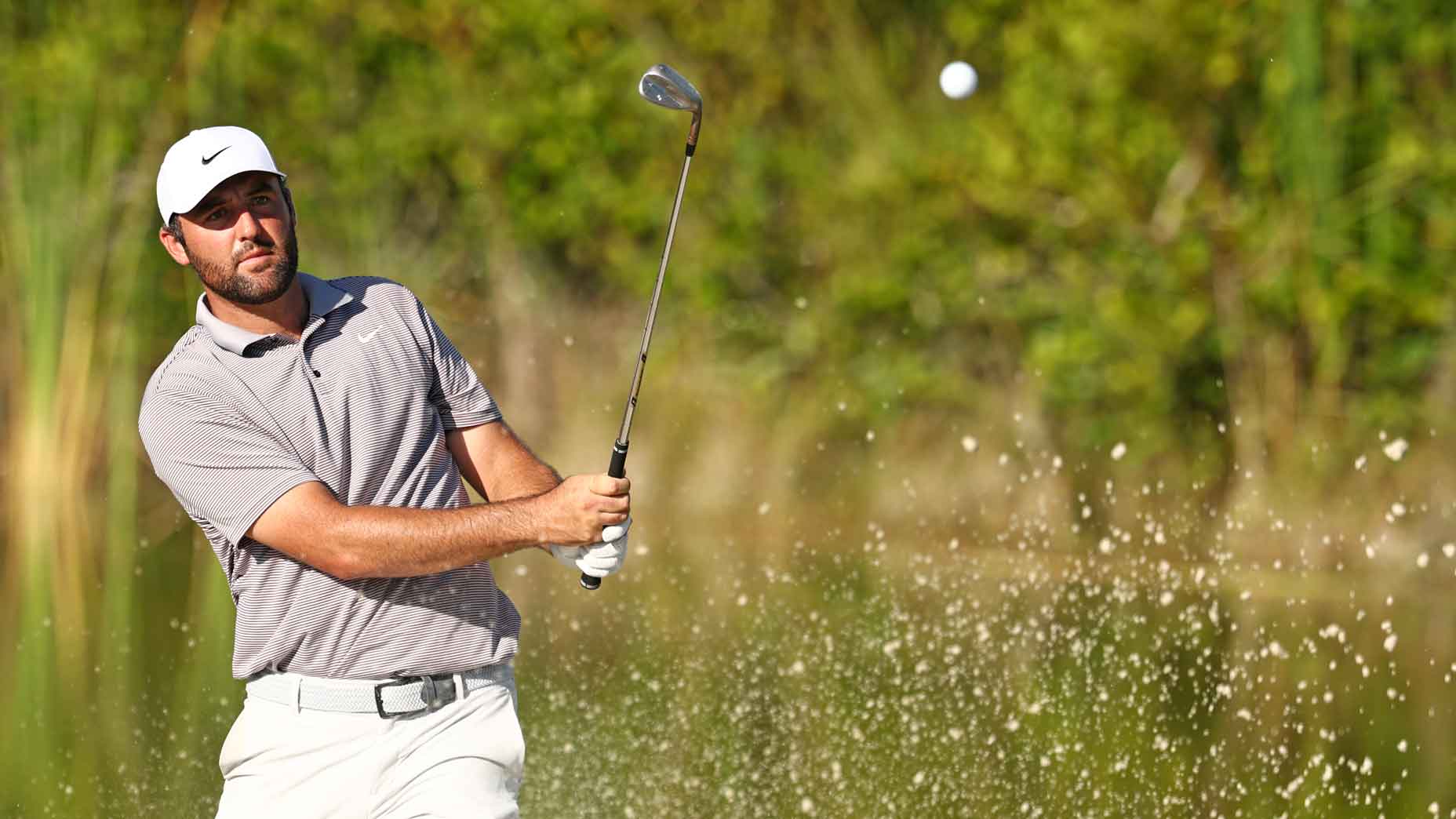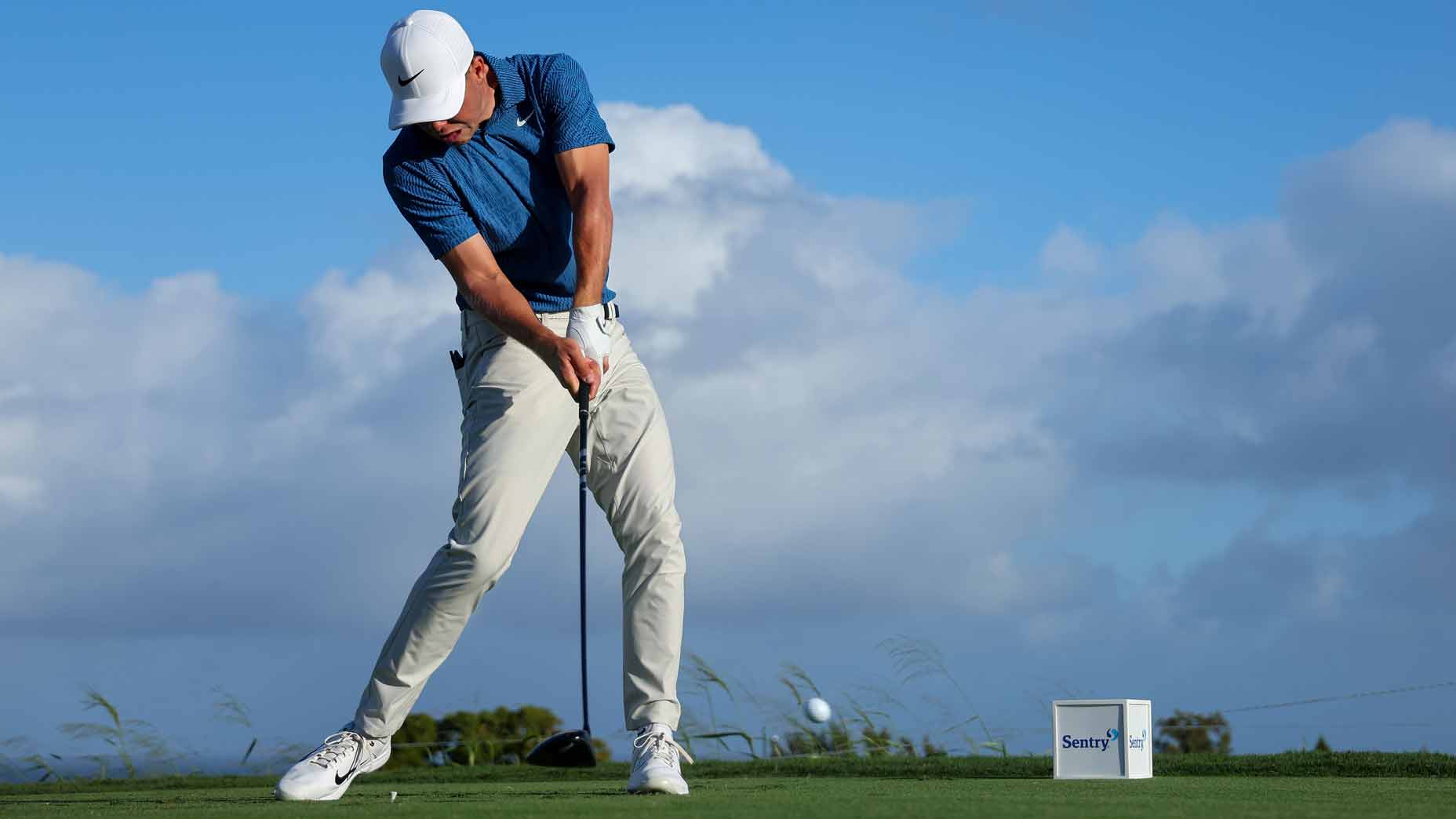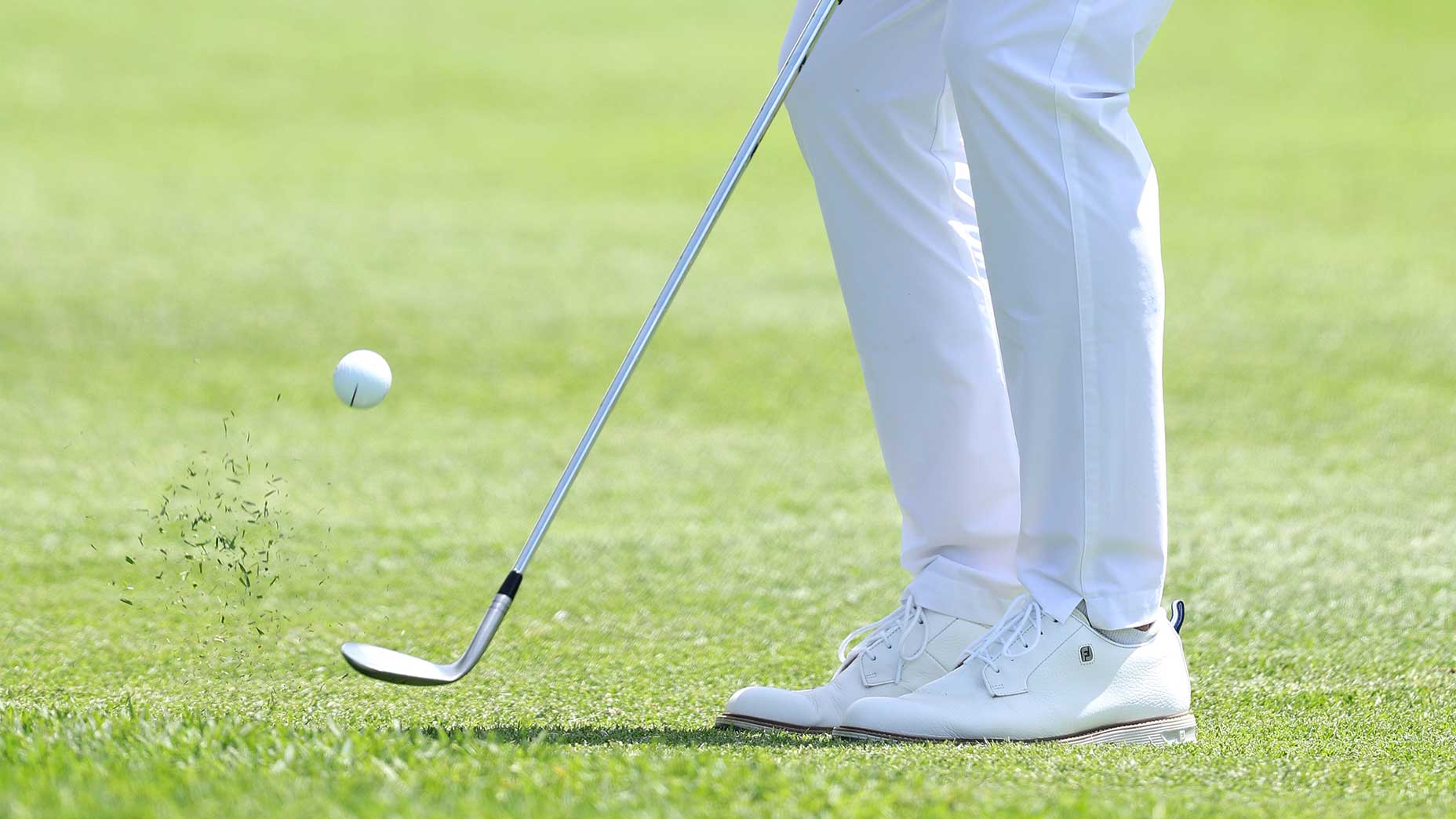Every golfer loves seeing the ball launch off their club and high into the air. After spending some time with many students on the driving range, it’s clear that the ones who can do this with consistency have a much better skill-level than those who can’t.
For a variety of reasons, golfers can struggle to hit the ball high. To help, I’m giving you 10 things that can help improve your launch.

True Spec Fitting
1. Contact
Solid contact has a tremendous impact on the launch of your shot. Hitting the ball in the center of the clubface and being consistent has a lot to do with proper golf posture. So be sure to bow forward from your hips so that your hands can hang directly below your shoulders. By doing so, it’ll give you the best chance at making better contact — and hitting the bottom half of the ball versus the top part (which produces a thinned shot).
2. Hit the ground
When I ask golfers how the ball gets into the air, I get a ton of different answers — with the most common response being an incorrect one. No, the ball doesn’t fly because you get under the ball. The ball is on the ground for most shots, so you can’t really get beneath it.
What truly allows the ball to launch is when the club hits the ground. Many golfers don’t really like the idea of having to collide the club with the ground and dig some dirt. But making peace with hitting the ground will help a ton with added trajectory — and proper compression.
3. Straighten your trail arm
At address, your trail arm will hang relaxed and relatively straight. When you make a proper backswing, this elbow will correctly fold. Therefore, to get the club back to the ground so that the ball can launch, the trail elbow needs to straighten like you’re throwing a ball straight into the ground.
4. Club Selection
I’m often shocked by the golfers who show up to lessons with a set of clubs that don’t have the correct makeup or loft in the driver. I recently switched my driver to 12 degrees of loft and it’s made a huge difference. I also have a 7-wood and a 5-hybrid I tend to use during rounds, which help me hit the ball high enough to carry hazards or hold the green.
If you’re unsure about what clubs to use, I always suggest getting fit by True Spec Golf. They recently had a mobile unit where I was teaching at, and it was such a luxury to be able to send my students right over to help them get the best equipment for their swing.
5. Driver
As mentioned, having the right driver loft is important — but remember that many driver heads are adjustable, so you can either add or subtract loft. The adjustable drivers come with a tool that allow you to easily make these changes, which can even be done during a round if you’re playing casually with friends.
You can simply loosen the screw and twist the head to your desired loft before retightening the screw.
Use this as an advantage when you’re looking for a higher ball-flight, as it’s there for a reason.
6. Driver tilt
If you’re not getting the ball flight you want with your driver, there’s a good chance you’re lacking back shoulder tilt at address.
When your ball position is more forward in your stance, you should allow your shoulders to tilt away from he target so that your lead shoulder is higher and your trail shoulder is lower. This will allow the club to make contact with the ball on the upswing and increase loft.
7. Set the club properly
Allow the club to rest properly on its bottom and avoid any inclination to close the face. When done correctly, the top line will be perpendicular to the target. The more lofted a driver, the more you should be able to see the scoring lines on the face. This simple check can make all the difference if you tend to hook your clubs.
8. Use a gap wedge
I suggest that every golfer have a gap wedge in their bag. Your gap wedge will go farther than your sand wedge and shorter than your pitching wedge, but is great for longer pitch shots and longer bunker shots — since it has bounce and a fair amount of loft.
9. Hit a proper pitch shot
When you’re hitting a true pitch around the green, I like to call it the boring middle. The clubhead should be centered to slightly forward of center, and the end of the grip of the club should point to the center of your body. I also like to see the weight relatively centered, as I believe it’s difficult to lean forward with your weight and not with the club shaft.
By using this proper setup, it will help you avoid steepness and digging, allowing your pitch shots to truly launch and sit down quickly.
10. Speed control
Having clubhead speed has a huge influence on your ability to launch the ball, but I suggest gaining your confidence first before trying to add speed.
One of my favorite speed-training products is The Stack System. All you need to do is try to swing as fast as possible, allowing the speed protocols and tracking to show the results. So it’s a great way to get the feel for how to control any increased swing effort.

Rapsodo Mobile Launch Monitor (MLM)
View Product












